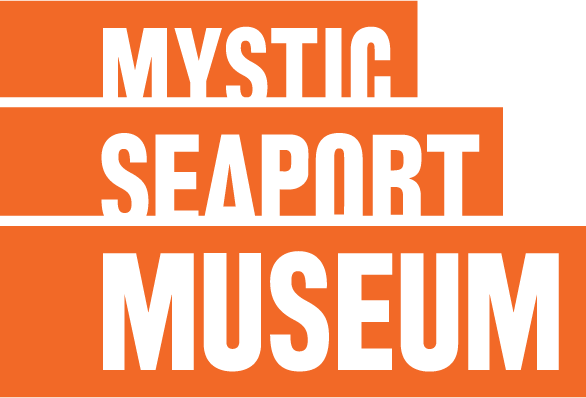
The Shipyard has been busy working on the Mayflower II since the moment of her arrival last November. Unlike the last two years, the ship will remain at Mystic Seaport until 2019 and not return to her homeport of Plymouth for the summer tourist season. This will enable the restoration project to be completed in time for the 400th anniversary of the Pilgrims’ voyage to Massachusetts in 2020.
Mayflower II is a reproduction of the original Mayflower. It was a gift to the American people to commemorate the historic ties between England and America, which were strengthened during World War II. The new ship was built in 1955-57 at Upham Shipyard in the town of Brixham in Devon, England. She sailed to the United States in 1957. The ship is owned and maintained by Plimoth Plantation, which has engaged Mystic Seaport to collaborate on the restoration.
“After hauling her for survey and evaluation in the winter of 2014-15 we have been actively engaged in project planning, material acquisition, and other tasks in anticipation of this 30 month continuous regime of restoration,” said Shipyard Director Quentin Snediker. “Work included site planning and preparation, preliminary engineering, and milling framing stock, knees and other specialized timber.”
The first task for this latest phase was to downrig and lighten the ship so she could be hauled out of the water in the Museum’s shiplift. Once hauled, she was moved back into the yard and then slid sideways to permit other vessels to be hauled while work progresses on Mayflower II. A temporary shelter will be erected over the vessel in March to protect her from the elements and permit the shipwrights and other staff members to work on her year round.
According to Captain and Plimoth Plantation Maritime Preservation Director Whit Perry, the primary task for at least the next nine months will be replacing frames and planking. The futtocks that make up the frames will be fabricated out of live oak and white oak. Planking will be primarily white oak.

Sourcing of wood suitable for ship building is difficult in this day and age. The wood being used on Mayflower II is a combination of wood that Mystic Seaport has acquired over the years and wood secured by Plimoth Plantation.
“We are still using wood salvaged from storm-damaged trees from Hurricane Katrina and Charleston, S.C., and we are acquiring new timber from Pass Christian, Miss. and New Orleans,” said Snediker.
Throughout the restoration of any vessel, it is critical to maintain the hull’s shape while portions of it are being disassembled and reconstructed. During the restoration of the Charles W. Morgan, the ship was supported by an elaborate and precise cradle. The Mayflower II has a cradle, but she is also supported by five steel girders that pass across the width of the ship through its gunports and two access holes.
“This is a step forward on the technical side,” said Perry. “It enables us to work on larger portions of the hull at the same time without having to worry about maintaining the integrity of its shape.”
The erection of the steel frame was carried out with the assistance of Arnold M. Graton Associates. The New Hampshire-based firm specializes in covered bridge restoration and timber-frame construction.
One of the more laborious tasks that is now complete was the removal of ballast in the bottom of the hold. (Ballast is weight carried low in a ship to prevent the vessel from being top heavy and tipping over.) In addition to 130 tons of lead and iron, concrete had been poured onto the bottom of the hold encasing some of the metal. This concretion had to literally be chiseled or jackhammered out – a hard, noisy job that the Shipyard staff is happy to have behind them.
Progress on the ship can be watched on a live camera for the next few weeks, until the shelter is constructed and the view is obstructed. Visitors to Mystic Seaport may view the ship in the Shipyard. Unfortunately, boarding is not possible due to the work presently taking place on the hull.


